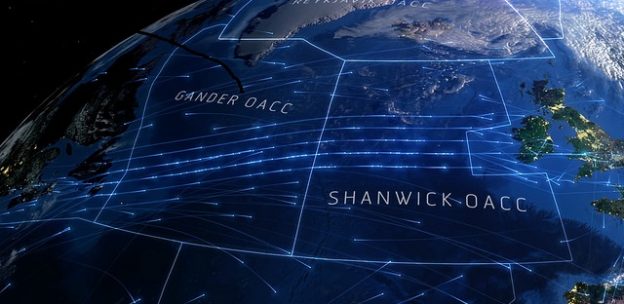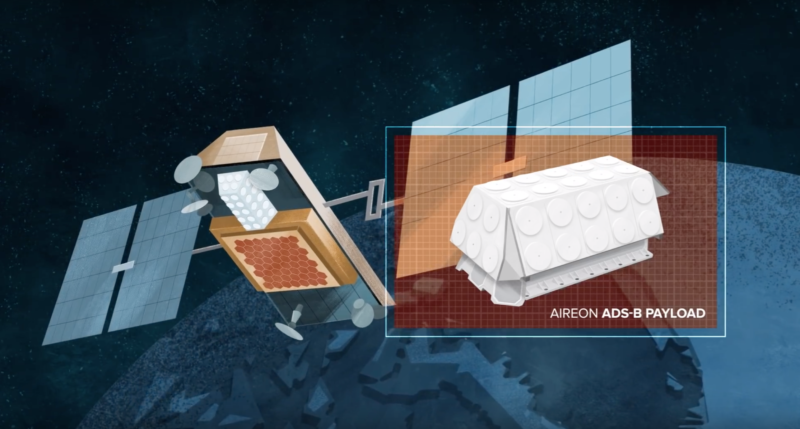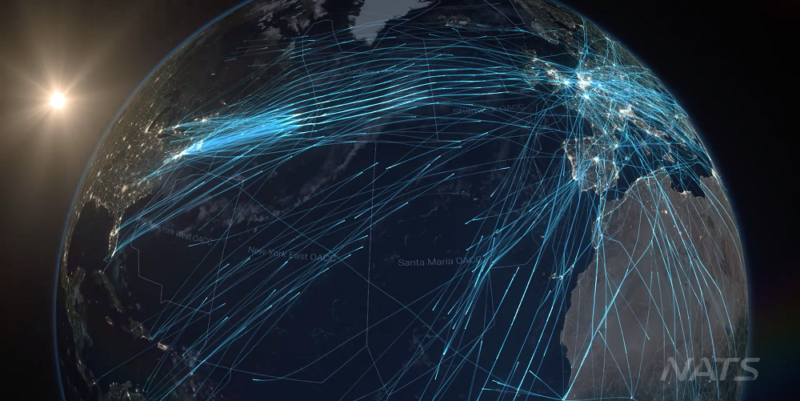Is it time to disband the Organised Track Structure?
3 February 2021Last week you might have seen some media coverage of a study led by academics at the University of Reading, looking at the savings in fuel and carbon that might be possible if flights took better advantage of the prevailing winds across the North Atlantic.
The study, published in Environmental Research Letters, analysed around 35,000 flights in both directions between New York and London from 1 December 2019 to 29 February 2020 and concluded that taking better advantage of the winds would have saved around 200 kilometres worth of fuel per flight on average, adding up to a total reduction of 6.7 million kilograms of carbon dioxide emissions.
Professor Paul Williams, an atmospheric scientist at the University of Reading and co-author of the new study, said: “Upgrading to more efficient aircraft or switching to biofuels or batteries could lower emissions significantly, but will be costly and may take decades to achieve.
“Simple tweaks to flight paths are far cheaper and can offer benefits immediately. This is important, because lower emissions from aviation are urgently needed to reduce the future impacts of climate change.”

NATS wasn’t involved in this particular study, but the principle that better, more efficient routes over the Atlantic can deliver major fuel and carbon emission savings isn’t new and is borne out in our own analysis. Unlocking those savings via new technologies and procedures has been the cornerstone of the North Atlantic Region strategy for a number of years.
This has undoubtedly been a terrible 12 months for aviation, but the dramatic fall in traffic we’ve seen across the Atlantic has given us a window of opportunity to do things differently, and to introduce things more quickly than otherwise might have been possible.
So, we’re going to disband the Organised Track Structure on days where our ATC supervisors don’t believe they are necessary.
For decades, aircraft flying across the North Atlantic have largely followed the Organised Track Structure (OTS) – essentially an invisible high altitude road network used to maximise efficiency in an environment where there is no real-time aircraft surveillance. Up to 12 tracks change twice a day to take account of the daily winds, but capacity on the most efficient routes has always been limited by the huge separation distances required.
That changed in 2019, when NATS and NAV CANADA became the first air traffic service providers in the world to start using Aireon’s real-time satellite-based ADS-B surveillance system to monitor North Atlantic air traffic.
As well as the obvious safety benefit that having real-time surveillance brings, it has also allowed us to safely reduce separation distances down to as low as 14 nautical miles which in turn offers aircraft more flexibility in terms of their speed and trajectory. That has meant more flights have been able to take advantage of the best routes, but have still been flying within an OTS environment.

The North Atlantic Tracks
Now, working directly with our airline customers and NAV CANADA, we are going to remove the OTS entirely on a number of days in order to see if the OTS is beneficial or causes disadvantages for airspace users.
A reduction in the OTS has long been part of our and NAV CANADA’s vision for the North Atlantic, but doing it now with 500 flights a day instead of the usual 1,300 flights, makes it a substantially more straightforward proposition both for us as air traffic service providers and for the airlines.
So, in the coming weeks, on days when the traffic levels allow, no tracks will be published either west or eastbound and the airlines will be asked to flight plan based entirely on their optimum route, speed and trajectory.
The OTS has been a part of transatlantic flying for decades, so doing without it is a big cultural and behavioural change for us and the airlines.
A lot of work is going into maximising the success of this initiative, including making sure we have the correct analytical measuring, modelling and reporting to help our airline customers incorporate procedural changes into their flight planning and operating procedures.
Our hope is that analysis of these flights, together with other tabletop exercises, will give us the evidence base we need to decide on the value of more permanent changes.
And as traffic begins to return in the months and years ahead, the kinds of benefits Professor Williams and his colleagues have highlighted might be within our reach.
Comments
Please respect our commenting policy and guidelines when posting on this website.



04.02.2021
13:21
Ahmed Ammar
We are waiting your analytical results of OTS
05.02.2021
13:26
Hendrik Wille
What will be the contingency plan in case of satellite outage? Or does this only apply when traffic flow is so low, that the individual tracks are already naturally separated?
05.02.2021
18:15
Mitch Launius
The concept is interesting but begs to question:
Will this be clarified in a NOTAM or NAT OPS Bulletin?
How would you integrate half-degree separation when traffic levels increase and capacity is challenged?
Have you addressed the impact on aircraft experiencing an emergency and diverting with out a clear idea of conflicting traffic flow?
10.02.2021
14:43
Jacob Young
Manager Operational PerformanceThanks for your question, Hendrik. We have contingency measures already in place for satellite outages. However, this is a very rare occurrence, with multiple back up systems. Additionally our system still utilises alternative satellite networks for period position information (ADS-C).
In the first instance, OTS NIL will only be in effect on days where traffic levels are very low. Any expansion on this will require additional ICAO oversight.
14:43
Jacob Young
Manager Operational Performance10.02.2021
14:44
Paul Beauchamp
Senior Communications Manager, Brand PR & Marketing CommunicationsGood questions, Mitch. We have been engaging with Airline partners via email and various meetings. IATA are currently working on additional communications packages for airlines which we expect to be released in the coming weeks.
Half degree separations have been utilised successfully in random airspace for some time and we will continue to do so as traffic increases, regardless of whether OTS NIL is in effect.
14:44
Paul Beauchamp
Senior Communications Manager, Brand PR & Marketing Communications10.02.2021
18:32
Jennifer Nystrom
Is it possible to see an example of what this message will look like? My company uses this data daily in automated scripts, and I would like to assure that we will still be able to process the messages, with your intended changes, for non-track days.
17.02.2021
12:36
Tony Keane
Certainly has a lot to recommend it. Have doubts about doing it when we are back to the 1300 flights!